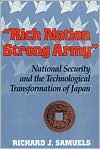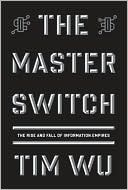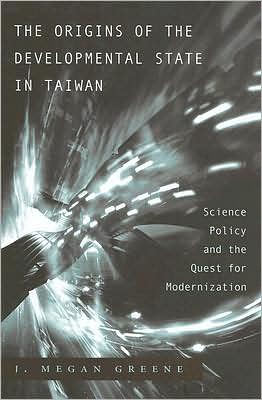Rich Nation, Strong Army: National Security and the Technological Transformation of Japan
Since World War II, Japan has become not only a model producer of high-tech consumer goods, but also - despite minimal spending on defense - a leader in innovative technology with both military and civilian uses. In the United States, nearly one in every three scientists and engineers was engaged in defense-related research and development at the end of the Cold War, but the relative strength of the American economy has declined in recent years. What is the relationship between what has...
Search in google:
Since World War II, Japan has become not only a model producer of high-tech consumer goods, but also - despite minimal spending on defense - a leader in innovative technology with both military and civilian uses. In the United States, nearly one in every three scientists and engineers was engaged in defense-related research and development at the end of the Cold War, but the relative strength of the American economy has declined in recent years. What is the relationship between what has happened in the two countries? And where did Japan's technological excellence come from? In an economic history that will arouse controversy on both sides of the Pacific, Richard J. Samuels finds a key to Japan's success in an ideology of technological development that advances national interests. From 1868 until 1945, the Japanese economy was fired by the development of technology to enhance national security; the rallying cry "Rich Nation, Strong Army" accompanied the expanded military spending and aggressive foreign policy that led to the disasters of the War in the Pacific. Postwar economic planners reversed the assumptions that had driven Japan's industrialization, Samuels shows, promoting instead the development of commercial technology and infrastructure. By valuing process improvements as much as product innovation, the modern Japanese system has built up the national capacity to innovate while ensuring that technological advances have been diffused broadly through industries such as aerospace that have both civilian and military applications. Struggling with the uncertainties of a post-Cold War economy, the United States has important lessons to learn from the way Japan has subordinated defense production yet emerged as one of the most technologically sophisticated nations in the world. The Japanese, like the Venetians and the Dutch before them, show us that butter is just as likely as guns to make a nation strong, but that nations cannot hope to be strong without an id Library Journal In this work, Samuels (political science, MIT), examines Japan's technological development since the end of the Edo Period in the second half of the 19th century. The central thesis is that Japan's economic growth since then, whether during peace or war, has been fired by a kind of ``technonationalism'' that can be defined as ``an ideology of technological development that advances national interest.'' The case overall is well argued and well supported, and the author is clearly in command of his subject. The book, however, is intended for a fairly sophisticated audience and will be rather rough going for the nonexpert. Recommended chiefly for academic and large public libraries.-Scott Wright, Univ. of St. Thomas, St. Paul, Minn.
PrefaceAbbreviationsCh. 1The Strategic Relationship of the Military and Civilian Economies1Ch. 2The Ideological Basis of Japanese Technonationalism33Ch. 3Military Technonationalism and Arms Production in Imperial Japan79Ch. 4The Imperial Japanese Aircraft Industry108Ch. 5Girding the Nation's Loins for Peace130Ch. 6Forces at Work: Rebuilding Japan's Defense Industry154Ch. 7The Postwar Japanese Aircraft Industry198Ch. 8Japan's Technology Highways270Ch. 9Technonationalism and the Protocols of the Japanese Economy319Notes343References411Index443
\ From the Publisher"This book is a pleasure to read. It is a well-argued, lucid account and explanation of Japanese economic success since the Second World War; it is an excellent example of how, historically, to tackle questions of technology and technological innovation and their relation to economic change; and it provides fascinating insight into the debate about the role of national defense in either stimulating or suffocating economic activity."-Business History\ "A masterful study of the Japanese arms and aircraft industries, analyzing the interrelationship between military and civilian technology since the mid-nineteenth century."-Foreign Affairs\ \ \ \ \ \ Library JournalIn this work, Samuels political science, MIT, examines Japan's technological development since the end of the Edo Period in the second half of the 19th century. The central thesis is that Japan's economic growth since then, whether during peace or war, has been fired by a kind of ``technonationalism'' that can be defined as ``an ideology of technological development that advances national interest.'' The case overall is well argued and well supported, and the author is clearly in command of his subject. The book, however, is intended for a fairly sophisticated audience and will be rather rough going for the nonexpert. Recommended chiefly for academic and large public libraries.-Scott Wright, Univ. of St. Thomas, St. Paul, Minn.\ \ \ BooknewsThe key to Japan's technological miracle of the last half century, says Samuels (political science, Massachusetts Institute of Technology), can be traced to an ideology that survived the defeat in World War II. From 1868 to 1945, he says, economic development was driven by the desire to enhance the nation through military might; since then the military element has dropped out, but technological expansion is still pursued for the good of the nation rather than for the individual or company. In so doing, they have become a major supplier of military technology for everyone else. Annotation c. Book News, Inc., Portland, OR (booknews.com)\ \







